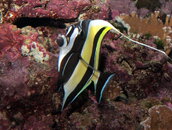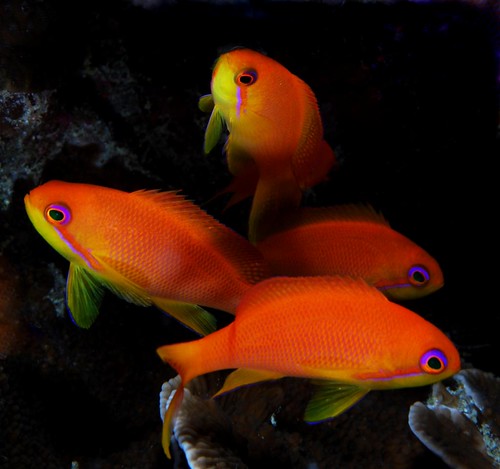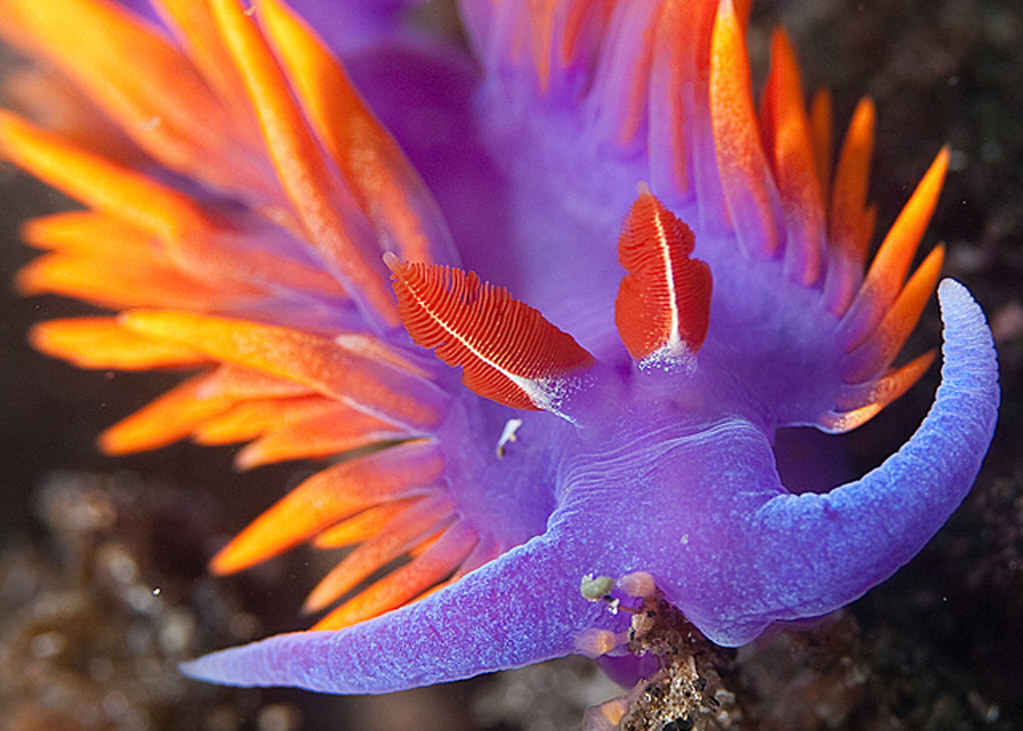Love your image, spectacular color.
Yes, he posted an image of an older drum, showing how good a DSLR can capture it's moving tail. Only problem is, the tail is partially blurred.. rather showed the problem rather than proving the opposite. The tail motion on that fish is sort of a wave, with part of it still, and the wavy moving. You have to look at the whole tail to see if it was frozen, not one part.
Nervous is not the same as constant fast motion. We have lots of nervous fish, only a few that are fast moving, and the tail of the drum is one of the worst.
But for reasons I don't really understand, DSLR users seem to have to make their camera's better and bigger and more impressive than they really are.
The issue is not that a point and shoot is "better", they might be as good as, but except for a couple of things, are not better. They may not even be more cost effective, as that depends on what your expectations are and what one's goals are.
After one gets by shooting images underwater for fun (which I like to do), I shoot for fairly large prints of comercial quality. For me, my printer ends at 13 x 19, so I don't worry about going any larger. The smallest I do is 11 x 14, so the image has to be fairly sharp.
Using a point and shoot for a crisp 13 x 19 means I have to shoot in a very small window of settings, and the image cannot have any significant cropping. Would a high end DSLR shoot a better image? Yup. If I had the right lens on it, and if I framed it as good, and if it was in focus.
But, if I go buy your average DSLR, and don't have the best lens and try to shoot at F22, then it will not produce a better image:
For the record, there are a lots of sites that show lens testing, but here is one for the very nice Canon L lens.... you can move the f stops around and see what happens to the image...just look at the actual images and see if you think F stops don't degrade the image...try F32 versus say f5.6.
Canon 100mm F2.8 L IS USM Macro Lens Review: 3. Test results (APS-C): Digital Photography Review
I have seen prints from that lens and they are really nice by the way, as long as one stays away from F16 and above.
Back when being a professional meant actually knowing the technology, they made lens with leaf shutters in them to get around the issues with a focal plane shutter. Today, no one seems to know there are any issues.
So just to clear the air:
1. There are different qualities of DSLR's...full frame, high end ones, with really good lens are better than everything else, except for a few medium format sensors and camera. Yes, they are better than any point and shoot by a fair amount
2. Average DSLR's very a great deal in quality, and the quality of the lens put on them. Some are better, some are not better than the best Point and Shoot, but in general, they all are at least as good as (if fairly new).
3. They all focus faster.
4. DOF control is a skill, and anyone that really knows it can control any camera that has some f stops. If you don't really know how, then a DSLR is easier.
5. Taking a DSLR underwater will cost a lot. If you want to do that, and can afford it, enjoy, they can take excellent images.
6. Most of the really good P&S camera's take better High Def video over your really good DSLR.. there are exceptions, but they are not the norm.
7. Good wide angle is the land of the DSLR. If you love to take them, can afford it and want to make large images, it is the only way to go.
8. You like taking snap shots, general interest, and a wide variety of images on one dive, DSLR's are not your friend.
9. Learning to take pictures underwater is a skill that takes time to learn. It is easier to learn in pieces and with small easy to carry equipment. Sometimes simpler is better (at least to start).
I have a standing bet with anyone that uses a DSLR... I will pay for your dive trip and take you out where there are blue dartfish and if you can get a close up image of one in focus that fills the frame, I will be impressed and be happy I paid for the trip, if not, then they get to pay me back for both of us.
Here is the fish:
Blue Goby
Oh, and I have lots of closeups of them, and having a small camera is part of the reason.
Or if you would like to see a better image (given his terrible image, that miss identification is understandable):
I have seen great images taken with just about every type of camera, and sometimes the operator is more important than the camera.
So the biggest advantage of a point and shoot is its ability to have a higher sync speed than a DSLR to capture fast moving fish. I believe that Bvanant has provided with his image of the Juvenile Drum shot with a DSLR which according to Puffer said would very hard to get a shot of without any blur from a DSLR.
Here is my example of which I believe most people would agree are fast moving skitish fish.
Anthias: taken on D80 ISO100, f18,1/80th
Even with a slow shutter speed of 1/80th I was able to capture all four without blur.
To be honest most of my macro work involves critters which are not fast moving and most of the time not moving at all. The issue of capturing fast moving small fish in macro photography would represent a very small percentage. The versatility of the DSLR with its broader range of DOF allows one to be more creative especially shooting subjects using shallow DOF. The ability to change between different lenses like between the 60mm and 100/105mm macro.
regards Mark





 )
) 



